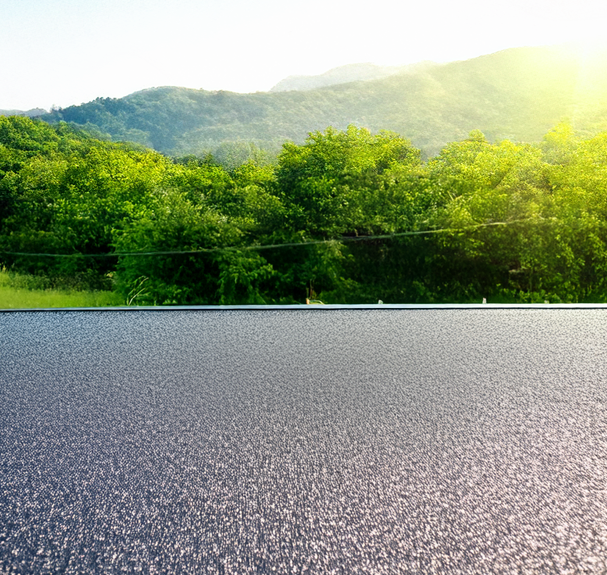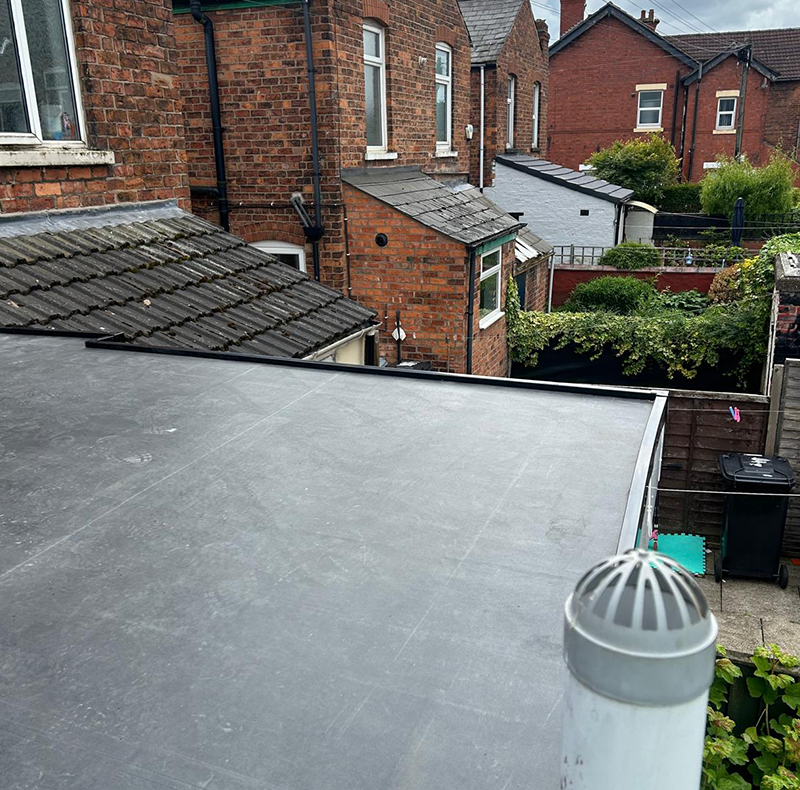Understand EPDM Rubber Roofing
All You Need to Know
There is an increase in people insisting on sustainable and cost-effective roofing solutions, and with this understanding the properties and benefits of EPDM is important. Are you considering replacing your roof? This synthetic rubber is a very popular choice for flat or low sloped roofs, in this blog post we will guide you through everything you need to know about EPDM roofing including its key benefits, potential drawbacks, installation process and maintenance tips.

What is EPDM roofing?
You may be questioning what EPDM means, it stands for Ethylene Propylene Diene Monomer which is a synthetic rubber. You may find this is commonly used in industrial and construction applications like garage door seals, pool liners and electrical insulation.
The way EPDM is manufactured creates a highly durable and waterproof material and can withstand hard weather conditions offering reliable protection for your property. This type of flat roofing can also resist extreme temperature, UV radiation and even exposure to chemicals. Whether you’re replacing an old roof or building a new one, EPDM is a reliable and cost-effective choice.
Key Benefits of EDPM Roofing


Drawbacks of Rubber Roofing
Puncture Risks:
Whilst EPDM is resistant to most outdoor situations and industrial applications, sharp objects or heavy foot traffic can cause rips or tears in the rubber if overused by walking on top of it or accidently dropping objects that may cause damage.
Aesthetic limitations:
EPDM rubber roofing has a utilitarian look, and the black flat roof might not be everyone’s preference. As mentioned in the name ‘flat roofing’ it has a smooth, black rubber surface and sits securely on top of your property, so if you are looking for a roof that is more extravagant or bold, this one may not be for you.
3 Ways You Can Install EDPM
To make this simple, I’m going to talk you through 3 methods, you will only need one of these main techniques when either installing yourself or recruiting professional services like us at Advanced Roofline Services. The 3 key methods are
1. Fully Adhered Installation
This is a process that involves bonding the EPDM to the roof deck or by using adhesives, this creates a secure and seamless finish that is resistant to wind uplift.
2. Mechanically Attached EDPM
Insulation sheets are mechanically attached to the roof deck with insulation plates and fasteners. This method is used more for larger roofs and offers a high level of security.
3. Ballasted Installation
The ballasted installation is simple, the EPDM membrane is laid on the roof loosely and is held in place by using large stones of gravel to keep the material down.
Flat Roofing Maintenance
Maintenance is always essential to prolong the lifespan of your roofs, but luckily rubber roofing is relatively low maintenance and only requires a few steps. These are,

Get a Free Quote for EDPM Flat Roofing
Compared to traditional pitched roofing, flat roofing is a cost-effective solution for both construction and long-term maintenance. Its sleek, modern aesthetic makes it a popular choice for new builds and home renovations.
If you’re in the market for a new roof, consider EPDM as a reliable and affordable option that will protect your building for years to come. If you are interested in EPDM rubber roofing contact us at info@advancedrooflinecheshire.co.uk


